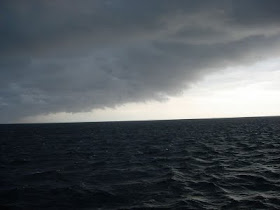I think there's a tendency nowadays to think that being able to play any kind of character you like is an innate good, and anything less is self-evidently wrong. Such a viewpoint tends to ignore the very useful focus you get from "restricted" games like Pendragon; when you sit down at the table, you know what kind of thing you'll be playing. There's no humming and hawing, and party conflict becomes something more interesting than alignment clashes. All on the same page, as you say.
Regarding the lack of interest in a generic Pendragon, I've noticed that the game as a whole is rather overlooked. We're playing it in my current group, and only myself and the GM have any prior experience of the game. Some of the group had never heard of it before. For such a very good, and old, game, it isn't particularly well known. I'd imagine the lack of interest in a generic ruleset stems from the same anonymity. Bear in mind that the game itself is currently out of print, and that the most recent two editions/printings bounced around a number of publishers. It's just not considered a big name game, much as it should be.
To which I replied:
Perhaps the two things are not unrelated. Restricted focus makes for better gaming but doesn't win you many friends in "the marketplace of ideas" or whatever you want to call it.
I learned this in the D&D 3.5 era. A large majority of people really want the billions of class, feat and skill options offered by all the splatbooks, even though it's probably detrimental to actual play.
When I got back into D&D in my early 20s the group I joined were like this. They were obsessed with character generation and the many dozens of different options available at every step. (The DM in particular seemed to have an entire shelf of splatbooks that he would refer to when offering friendly advice to us players - all of them stuffed to the gills with new prestige classes and superduper feats. The flipside to this was the advice you would get not to take this or that feat at character generation. "Don't take toughness. It's useless." Sage nods from the others around the table.) It was great to have all those choices and it would be churlish to criticise something that offered them so much pleasure, but it sometimes felt as if the WotC people, in allowing this horrendous unbridled growth of options, had turned character generation into a monster. Arguments would break out over what was or wasn't the best starting feat for this or that race and class combination; newbies (like me) were left confused and disillusioned when told for the third time that they shouldn't have gone for this or that skill... and it all seemed to get in the way of playing the actual game.
I see the benefit of the Pendragon approach more and more, for the exact same reasons that Kelvin gives. And yet this advantage it offers is its Achilles Heel, because I'm sure that "restrictiveness" is something that most players (most people, actually) are intrinsically prejudiced against.














